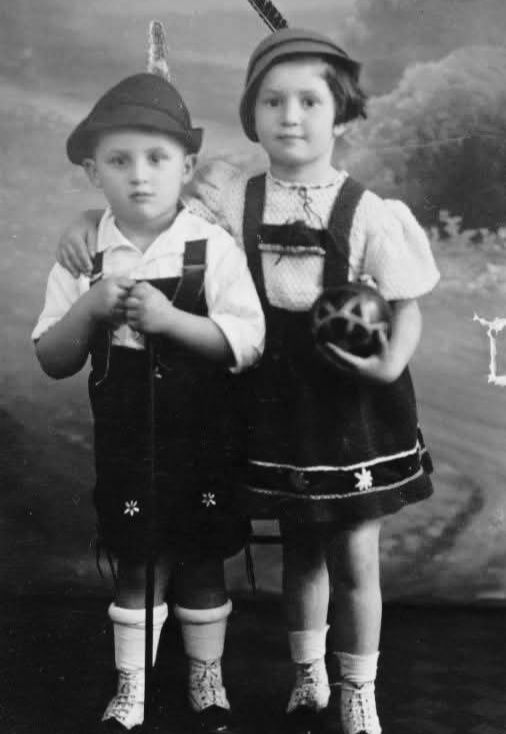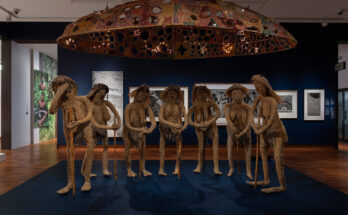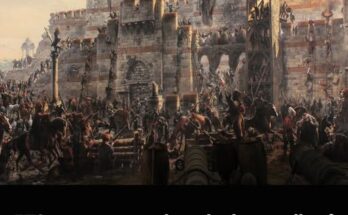
Ruth’s little brother, Aharon, was not just a sibling. He was her companion, her playmate, her confidant, and one of the most important people in her life. “We did a lot of things together like walking, talking, singing, and playing soccer,” Ruth remembered fondly, her voice carrying the tender echoes of a past filled with laughter, mischief, and innocence. For Ruth, Aharon was more than family — he was a part of her very soul, a light in the world that made life feel safe and whole.
But the world they knew — full of music, games, and familial warmth — was violently shattered when Nazi Germany invaded. The joyful cadence of their childhood was replaced with fear, confusion, and darkness. Ruth’s family, like millions of others, was persecuted for one reason: they were Jewish. Rounded up and deported, they found themselves caught in the gears of a machine built for destruction. At Auschwitz-Birkenau, the infamous Nazi extermination camp, Ruth’s family was torn apart. It was there, amidst the smoke and the barbed wire, that she last saw her beloved Aharon. She never saw him again.
Later, Ruth would learn that Aharon had been murdered — just one among the 1.5 million Jewish children who perished in the Holocaust. And yet, in her memory, Aharon lives. “We never argued,” Ruth said. “We were always warm and loving. Always.” In those simple, powerful words, we are given a glimpse of what was lost — a child’s love, a sister’s bond, and a future stolen.
Because of Aharon, we remember. Because of Ruth, we know Aharon.
The Light of Childhood
Before the world descended into madness, Ruth and Aharon lived a life much like any other children. They played soccer in the streets, shared secrets in hushed whispers, and sang songs that brought smiles to their faces. Their lives were marked not by war, but by wonder. Theirs was a world of siblings close in age, growing up in a household full of the comforting rituals of daily life — meals shared, chores done together, mischief made with an understanding that home was always a safe return.
These moments, though seemingly small, are now sacred. They represent what was lost during one of the darkest chapters in human history. In remembering the laughter of two siblings playing soccer or the warmth of their voices as they sang side by side, we resist the dehumanization the Nazis sought to impose. We assert the truth: these were real children, with real dreams and real relationships.
Torn Apart by Hate
The invasion by Nazi Germany did not just mean tanks and soldiers; it meant the systematic unraveling of families, of communities, of entire ways of life. For Jews like Ruth and Aharon, it meant wearing yellow stars, being herded into ghettos, facing starvation, humiliation, and fear. And then came the trains — those horrifying cattle cars that carried millions to the camps, where cruelty and death awaited.
At Auschwitz-Birkenau, families were separated within minutes of arrival. Mothers were torn from daughters, brothers from sisters, husbands from wives. Elderly people and young children were often sent directly to the gas chambers. For a young child like Aharon, the chances of survival were virtually nonexistent.
What must it have felt like for Ruth in those moments? The trauma of being ripped from the one person who shared her childhood memories, who knew her the way no one else did. The helplessness of watching him disappear into the faceless crowd of victims. The pain of not knowing where he went, or what happened to him. And then, the terrible confirmation that he had been killed. There is a grief so profound it cannot be expressed in words, only in the silence that follows — a silence Ruth had to carry for the rest of her life.
Aharon: A Name Among Millions
The Holocaust is often recounted in numbers: six million Jews killed, 1.5 million of them children. But behind each number was a name, a life, a story. Aharon was not just one among millions; he was Ruth’s brother. He had a favorite song, a favorite game. He had fears and dreams. He probably wanted to grow up to be something — maybe a teacher, a musician, or an athlete. We’ll never know.
But Ruth remembered. And because she remembered, we are given the chance to remember too. When she said, “We never argued. We were always warm and loving. Always,” she was not only speaking about their past. She was testifying to their humanity, and to the power of sibling love that even death could not erase.
Every time Aharon’s name is spoken, every time his story is shared, he is not forgotten. In this way, memory becomes an act of defiance — a resistance to the Nazi goal of erasing Jewish life from the face of the Earth.
Bearing Witness
Ruth’s survival carried with it a heavy responsibility: to bear witness. In telling Aharon’s story, she ensured that he would not become a nameless victim lost to history. Her memories breathe life back into the past. They remind us of what the Holocaust truly was — not an abstract horror, but a personal and deeply human tragedy.
By sharing her story, Ruth becomes a guardian of memory, a voice for those who can no longer speak. Her act of remembrance is a sacred one. It forces us to confront the consequences of hatred and indifference, and to consider the moral responsibility we all have to prevent such atrocities from happening again.
We often think of history as something that happened long ago, but for survivors like Ruth, it is never far away. The trauma echoes through generations. And yet, amidst the sorrow, there is also resilience. Ruth’s love for Aharon did not die. It became her strength, her reason to speak, her reason to remember.
Why We Must Remember
Remembering Aharon is not just about honoring one child; it is about remembering all the children whose lives were stolen. It is about preserving the dignity of those who were dehumanized. It is about reminding ourselves that genocide is not just a crime of murder, but a crime of erasure — the erasure of stories, relationships, hopes, and futures.
When we say Aharon’s name, we are committing to the idea that no child should ever suffer as he did. That no sibling should ever feel the pain Ruth felt. That no society should ever allow hatred to become law, and indifference to become complicity.
Memory, in this way, is more than recollection — it is action. To remember is to educate, to warn, to advocate, and to change. It is to teach children about the past so they can shape a better future. It is to remind leaders of the cost of their choices. It is to create monuments not of stone, but of empathy and awareness.
A Legacy of Love
The bond between Ruth and Aharon did not die in Auschwitz. It lives on in every story Ruth told, in every audience that listened, in every child who learned their names. Their love is a legacy — one that transforms unimaginable loss into a call for compassion, justice, and humanity.
We may never know all the names of the 1.5 million children killed in the Holocaust. But each time we remember one, we honor them all. Each time we tell the story of Ruth and Aharon, we shine a light on the darkness and say: This must never happen again.
Ruth’s words — simple, heartfelt, profound — linger in the air like a prayer: “We never argued. We were always warm and loving. Always.” In those words lives the essence of what was taken, and the power of what endures.
Because of Aharon, we remember the children.
Because of Ruth, we remember Aharon.


